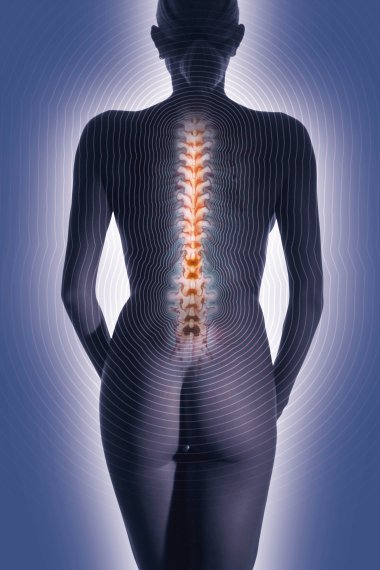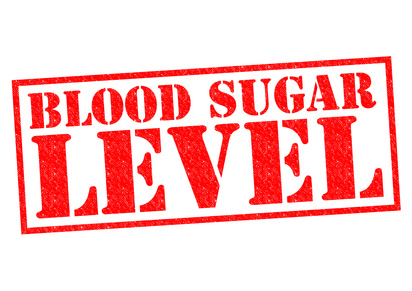Folic acid (folate, folacin, vitamin B9)
 The most common term for this nutrient is folic acid, whereas vitamin B9 is hardly ever used. Folic acid is the synthetic form that is found in vitamin pills, while folate and folacin are the forms of the nutrient that are found naturally in food. Folic acid is very stable and gets converted into folate in the body. The vitamin is water-soluble. Most of it gets stored in the liver, which contains around half the body's total amount of folate. The nutrient is destroyed by boiling and heating.
The most common term for this nutrient is folic acid, whereas vitamin B9 is hardly ever used. Folic acid is the synthetic form that is found in vitamin pills, while folate and folacin are the forms of the nutrient that are found naturally in food. Folic acid is very stable and gets converted into folate in the body. The vitamin is water-soluble. Most of it gets stored in the liver, which contains around half the body's total amount of folate. The nutrient is destroyed by boiling and heating.









 Vitamin B12 is a common term for a group of chemically related substances that all have vitamin activity. They are also known as cobalamins. The biosynthesis of the basic structure is handled by bacteria that are found many places in nature. The uptake of vitamin B12 from food requires the presence of the protein intrinsic factor that is formed in the gastric mucosa. Intrinsic factor binds to vitamin B12 and transports it into the body from the small intestine. Coli bacteria in the colon also produce vitamin B12 that is taken up by the body. Vitamin B12 is stored in the liver for up to several months at a time, and we humans are also able to reuse vitamin B12 that has been absorbed from the intestine. It is generally more difficult for the body to absorb vitamin B12 compared with other vitamins, and our ability to take up the nutrient decreases as we grow older. The synthetic basic form of vitamin B12 is used in nutritional supplements and also as a food additive. The dosages are typically rather large in order to ensure sufficient uptake of the nutrient.
Vitamin B12 is a common term for a group of chemically related substances that all have vitamin activity. They are also known as cobalamins. The biosynthesis of the basic structure is handled by bacteria that are found many places in nature. The uptake of vitamin B12 from food requires the presence of the protein intrinsic factor that is formed in the gastric mucosa. Intrinsic factor binds to vitamin B12 and transports it into the body from the small intestine. Coli bacteria in the colon also produce vitamin B12 that is taken up by the body. Vitamin B12 is stored in the liver for up to several months at a time, and we humans are also able to reuse vitamin B12 that has been absorbed from the intestine. It is generally more difficult for the body to absorb vitamin B12 compared with other vitamins, and our ability to take up the nutrient decreases as we grow older. The synthetic basic form of vitamin B12 is used in nutritional supplements and also as a food additive. The dosages are typically rather large in order to ensure sufficient uptake of the nutrient. Vitamin C is also known as ascorbic acid and L-ascorbic acid. Most animals are able to synthesise vitamin C by means of a stepwise, enzymatic conversion of glucose (dextrose). However, humans, apes, guinea pigs, and certain other animals have lost this ability during evolution. The largest concentrations of vitamin C are found in the white cells of the immune defence, the pancreas, the testicles, and the ovaries. Vitamin C is water-soluble and as it is not stored in the body, we depend on regular intake of the nutrient. Vitamin C is destroyed by light, heat, boiling, freezing, preservation, and storage (including winter storage of vegetables and fruit).
Vitamin C is also known as ascorbic acid and L-ascorbic acid. Most animals are able to synthesise vitamin C by means of a stepwise, enzymatic conversion of glucose (dextrose). However, humans, apes, guinea pigs, and certain other animals have lost this ability during evolution. The largest concentrations of vitamin C are found in the white cells of the immune defence, the pancreas, the testicles, and the ovaries. Vitamin C is water-soluble and as it is not stored in the body, we depend on regular intake of the nutrient. Vitamin C is destroyed by light, heat, boiling, freezing, preservation, and storage (including winter storage of vegetables and fruit). There are several kinds of vitamin D with the two most important being:
There are several kinds of vitamin D with the two most important being: Vitamin was originally isolated from wheat germ oil in 1936. The nutrient is a lipid-soluble vitamin of vegetable origin that is primarily found in fatty foods. Vitamin E includes eight different compounds called tocopherols and tocotrienols. Alpha-tocopherol is considered the most important type of vitamin E for humans, as it is the most prevalent and active form of the nutrient. The largest concentrations are found in the adrenal glands, testicles, uterus, and fatty tissues. Vitamin E is destroyed by light and freezing. Oils should be stored in a dark and cool place.
Vitamin was originally isolated from wheat germ oil in 1936. The nutrient is a lipid-soluble vitamin of vegetable origin that is primarily found in fatty foods. Vitamin E includes eight different compounds called tocopherols and tocotrienols. Alpha-tocopherol is considered the most important type of vitamin E for humans, as it is the most prevalent and active form of the nutrient. The largest concentrations are found in the adrenal glands, testicles, uterus, and fatty tissues. Vitamin E is destroyed by light and freezing. Oils should be stored in a dark and cool place. Vitamin K is lipid-soluble and was discovered by the Danish professor and Nobel Prize laureate Henrik Dam. There are three different forms with different functions. Vitamin K1 is primarily found in green plants, whereas vitamin K2 is produced by bacteria, and vitamin K3 is synthetic.
Vitamin K is lipid-soluble and was discovered by the Danish professor and Nobel Prize laureate Henrik Dam. There are three different forms with different functions. Vitamin K1 is primarily found in green plants, whereas vitamin K2 is produced by bacteria, and vitamin K3 is synthetic. An adult contains around one kilogram of calcium, which is the most abundant mineral in the human body. Bones and teeth store around 99% of our calcium and 1 per cent is used to support metabolic functions. Levels of calcium in the blood are tightly controlled, as the slightest deviations may result in serious symptoms of the nervous system and the heart.
An adult contains around one kilogram of calcium, which is the most abundant mineral in the human body. Bones and teeth store around 99% of our calcium and 1 per cent is used to support metabolic functions. Levels of calcium in the blood are tightly controlled, as the slightest deviations may result in serious symptoms of the nervous system and the heart. The mineral chromium is found in various forms. Hexavalent chromium is used for industrial purposes such as chrome plating, tanning of hides, dyes, wood protection etc. This form of chromium is toxic and may cause contact dermatitis and certain cancer forms. Trivalent chromium, on the other hand, is found in biological matter such as plants and animals and is an essential nutrient. As the body's need for chromium is rather small, this nutrient is characterised as a trace element. The body stores around 4-6 mg of chromium.
The mineral chromium is found in various forms. Hexavalent chromium is used for industrial purposes such as chrome plating, tanning of hides, dyes, wood protection etc. This form of chromium is toxic and may cause contact dermatitis and certain cancer forms. Trivalent chromium, on the other hand, is found in biological matter such as plants and animals and is an essential nutrient. As the body's need for chromium is rather small, this nutrient is characterised as a trace element. The body stores around 4-6 mg of chromium. An adult person contains around 800-1,200 grams of phosphor. Together with calcium, phosphor is one of the most abundant minerals in the human body and it is vital to maintain the proper balance. About 90 per cent of the body's phosphor is found in our bones and teeth. Phosphor is also an active element of many biochemical processes and even functions as the chemical compound phosphate. Phosphor is regulated in the same way as calcium where vitamin D supports the uptake from the digestive channel, a parathyroid hormone regulates the blood content of the mineral, the kidneys control the excretion, and the bones function as a storage facility.
An adult person contains around 800-1,200 grams of phosphor. Together with calcium, phosphor is one of the most abundant minerals in the human body and it is vital to maintain the proper balance. About 90 per cent of the body's phosphor is found in our bones and teeth. Phosphor is also an active element of many biochemical processes and even functions as the chemical compound phosphate. Phosphor is regulated in the same way as calcium where vitamin D supports the uptake from the digestive channel, a parathyroid hormone regulates the blood content of the mineral, the kidneys control the excretion, and the bones function as a storage facility.